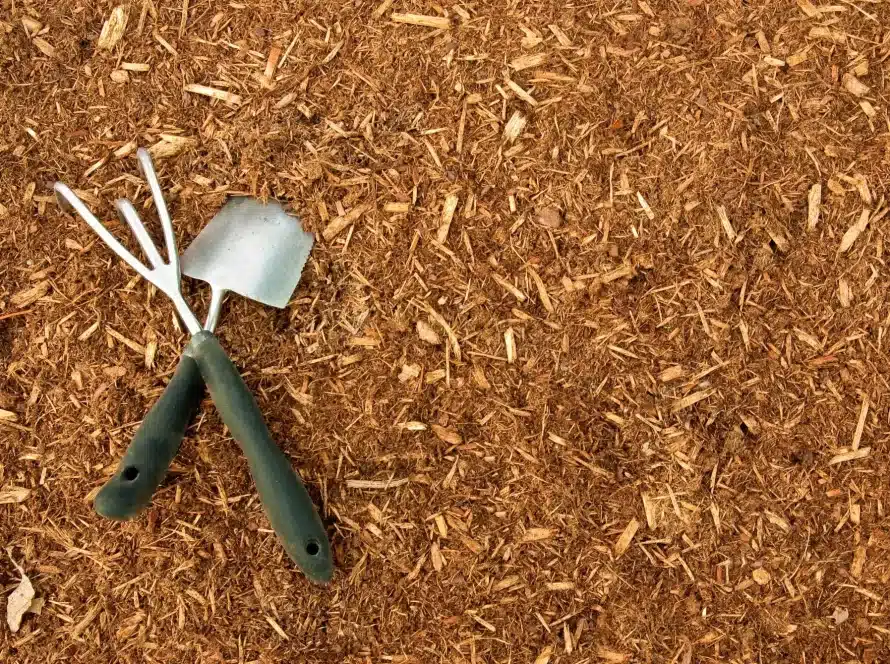Building your own planter boxes or raised beds where your flowers and veggies can grow sounds fun, right? But before we grab our tools and start building, we need to talk about the wood we’re going to use.
Picking the right wood can make your garden look like a million bucks. What’s better, though, is that it can also keep you happy and healthy. With so many kinds of wood out there, it can feel a bit tricky to choose.
But don’t worry! We’re here to make it easier.
In this guide, we dive into the best wood for planter boxes. So, let’s get started and learn more!

Why Wood?
When you think about bringing nature into your garden, what better way to do it than with one of nature’s very own products? Wood is a piece of the outdoors ready to blend into your garden, offering a warm and natural look that just feels right.
Wood has this special way of making everything look cozy and inviting. Whether it’s a rustic pine planter box or a sleek cedar-raised bed, wood adds a touch of natural beauty that complements any garden. It’s like having a little bit of the forest right in your backyard.
It’s also tough as nails. Well, maybe not actual nails, but wood is pretty sturdy! With the right kind of wood, your garden projects can stand up to rain, sun, and even a little snow.
Some woods are naturally tough against rot and bugs, which means more growing seasons for your plants and less worry for you.
Choosing wood is also a high-five to Mother Nature. It’s renewable, biodegradable, and has a smaller carbon footprint compared to plastics or metals. By picking the right kind of untreated wood, you’re making a choice that’s good for your garden and the planet.
Whether you’re just starting to explore gardening or you have dirt permanently under your nails from years of experience, wood is wonderfully forgiving and versatile. It can be cut, shaped, and customized to fit any garden dream.
And the best part? It offers a sense of accomplishment as you see your garden structures come to life, piece by piece.
Wood in the garden adds a layer of love, warmth, and sustainability to the space you cherish.
The Best Woods to Use
Picking the right wood is like choosing a teammate for your garden adventure. You want something that not only looks good but can also stand up to the challenges of outdoor life. Here are three MVPs in the world of garden woods.
Cedar Wood
Imagine a wood so tough it laughs in the face of rot and pests. That’s cedar for you! Cedar has natural oils that make it resistant to decay and insects, making it a top choice for your garden projects.
As it ages, cedar gracefully turns into a beautiful silver-gray color that looks like something out of a magazine. It’s durable, but it’s got style, too.
Redwood
Here’s another superstar in the durability department. Redwood is known for its strong resistance to moisture, which means it won’t warp or shrink easily.
Whether it’s a rainy season or a dry, hot summer, redwood keeps its cool, maintaining its stunning appearance year after year.
Untreated Pine
On a budget? No problem! Untreated pine is here to save the day.
Pine is more affordable than cedar or redwood but still brings a lot of charm to your garden. It’s perfect for those who are experimenting with garden projects or want something nice without breaking the bank.
Keep in mind that pine might not last as long as cedar or redwood, especially if it’s not treated, but it’s a great starting point for temporary projects or for those learning the ropes of gardening DIY.
Each of these woods has its own special qualities that make them a fantastic choice for:
- Planter boxes
- Raised beds
- Trelisses
- Other garden structures
Whether you’re looking for durability, beauty, or affordability, there’s a wood out there that’s just right for your garden dreams. And remember, choosing the wood that best fits your needs and budget is the first step in bringing those garden projects from imagination to reality.
Considerations for Choosing Wood
Picking the right wood is like choosing the best ingredient for your favorite recipe. The outcome depends a lot on the quality and type of what you put into it.
There are a few key things to think about.
Untreated vs. Treated Wood
It’s a bit like the choice between organic and non-organic food. Untreated wood is all-natural, without any chemicals added to it. This is great for keeping your garden safe and healthy, especially if you’re growing veggies or herbs you plan to eat.
Treated wood, on the other hand, has been processed to resist rot and insects. But, the chemicals used can sometimes harm your plants and the environment.
So, when in doubt, go for untreated wood for your garden projects. It’s the green thumbs-up choice!
Durability and Maintenance
Not all woods are created equal when it comes to standing up against Mother Nature. Some, like cedar and redwood, are naturally tough and can last many growing seasons with minimal care. Others, like pine, might need a bit more TLC to stay in shape. Think about how much time and effort you’re willing to invest in maintaining your garden structures.
If you’re looking for something low-maintenance, cedar or redwood might be your best bet.
Cost
Let’s talk numbers. Cedar and redwood are the premium woods. They’re top-notch but come with a higher price tag. Pine, being more affordable, is the budget-friendly option.
It’s about finding that sweet spot between what you’re willing to spend and the quality you’re looking for. Sometimes, investing a bit more upfront can save you money in the long run because you won’t have to replace your garden structures as often.
Choosing the right wood for your garden projects is a balance of considering:
- The health of your garden
- How much maintenance you can handle
- Your budget
It’s all about making informed choices that align with your gardening goals and values. So take your time, think about what’s important to you, and pick the wood that will make your garden both beautiful and sustainable.
Getting It Right: Installation and Maintenance
Creating something with your hands is one of the best feelings, especially when it comes to enhancing your garden. Whether you’re assembling a raised bed for your carrots or a planter box for your petunias, a few tips on installation and maintenance can go a long way.
Installation Tips
Before you start, make sure you have all your measurements down pat. A little planning can save you a lot of time (and wood) later on.
Clear the space where you’ll place your planter box or raised bed. If you’re putting it on grass, consider laying down a barrier to keep weeds at bay.
Make sure your design allows for proper drainage to prevent waterlogged soil. A few holes in the bottom, lined with a layer of rocks or gravel, can do the trick.
When putting it all together, use screws or nails that are suitable for outdoor use to avoid rusting. If you’re not into heavy tools, there are plenty of easy-to-assemble kits out there that only require the most basic tools.
Maintenance Advice
Applying a natural, non-toxic sealant to your wood can help protect it from moisture and sun damage. This can significantly extend the life of your garden bed or planter box.
At the end of the season, give your wood a gentle clean with soapy water and a soft brush. This helps prevent mildew and keeps it looking fresh.
Once a year, take a little time to inspect your wood for any signs of wear or damage. Tightening up loose screws or replacing a worn-out board can keep your garden looking great.
With these tips in your gardening toolkit, your wooden planter boxes and raised beds be a beautiful home for your plants and will stand up to the elements, year after year.
Remember, a little effort in the beginning and some love along the way can make your garden projects thrive just like the plants they house.

Beyond the Wood: Enhancing Your Garden
Use your wooden structures to create harmony in your garden. Arrange your planters and beds to guide the eye or create cozy nooks. Think about how the natural color and texture of the wood can complement the plants you choose.
Play with different heights by using raised beds for some plants and ground-level planters for others. This adds visual interest and can also help you manage different types of plants more efficiently.
Create a Masterpiece With the Best Wood for Planter Boxes

Compare Quotes from Top-rated Landscaping Contractors in your area.
The choice of the best wood for planter boxes and raised beds is crucial. It sets the stage for a thriving, sustainable, and beautiful garden. Remember, each wooden structure you create is a step toward a greener, more vibrant outdoor space.
Ready to turn your garden dreams into reality? Alpha Living connects you with top-rated contractors who specialize in bringing your gardening projects to life.
Enter your zip code here to find the perfect match for your project and embrace the ease and reliability of professional craftsmanship.



Facebook
Comments